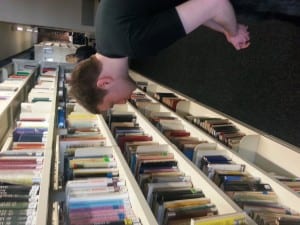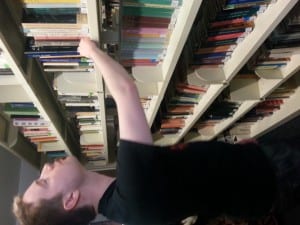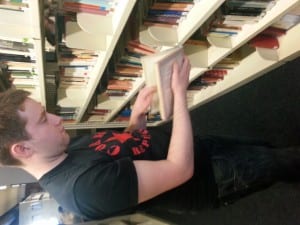


On Wednesday, 18 February we were asked to do a trail run of our idea piece that are to perform in our site-specific location of the library. Through a miniature version of our performance we decided that we were going to give people questions to find the answer to questions about certain library books. If they found the answer within a certain amount of time (10 minutes were allocated) they were given a piece of fruit or sweets as a reward. Finding knowledge and getting rewarded with food became quite a fun game to play in the library as lots of students like munching when writing essays in the library.
To help support our idea we started looking at Blast Theory. (Blast Theory, 2015). Blast theory looks at the concept of using site-specific work by the use of games. There was an example of “Can You See Me Now” where they used real-life people and people playing online. It was a big game of “ hide and go seek”. This example shows that a game can be used in a big city environment and shows that shows the link that people can have with computers in everyday life.
We were asked why we want to look at the link of food and knowledge. Our answer is that food is a basic necessity and that in modern society knowledge is becoming one of the key factors of everyday life as well. In this University library trial run, these two crossed over in more ways than people realise. Nowadays when we study we use food as a reward after we’ve done a certain amount of work and if we can make students use the old way of finding knowledge, by just using a library book and no technology and reward them with food, they may go away from this experience with a new information without them realising it – due to them being rewarded with a basic everyday thing that is food.
The feedback that we got on our trial run is that fellow students were asking how it would be done. We were looking at using one of the library group rooms or some empty library shelves to indicate our base. Once a question was answered correctly and the ‘contestant’ picked his food reward from the shelf, the empty space would be filled with the book where the information had been found from. Then this shows the sources of information the participants had used to gain the answers for the day by the use of the reward of food.
Blast Theory. (2015) Chronology. [Online] Brighton. Available from: http://www.blasttheory.co.uk/our-work/. [Accessed 12th March 2015].
Samantha Foster.